The beautiful city of Nara was the capital of Japan for a short period of time until the year 784. The number of temples, museums and gardens that line its streets and its eight World Heritage Sites mean that many travellers take the trouble to visit it even if it is just on a day trip, making it one of the most popular destinations to see in Japan.
Who hasn’t seen photos of tourists surrounded by deer? Well, those photos are most likely from here (or from Miyajima, of course).
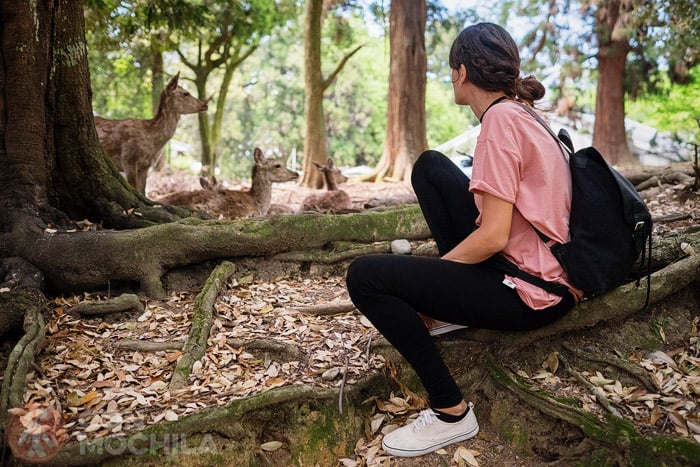
We did just that and in one day we visited several of its most touristic spots on a walk that took us at least eight kilometers.
I don’t know about anything else, but if there was one thing we did during our five-week trip to Japan, it was to walk. So today we invite you to tour the park with us and discover three of the eight historic monuments of ancient Nara that have been listed as World Heritage Sites since 1998.
Nara Park (Nara Koen) is a green space that concentrates most of the buildings of interest, so taking a walk through it one ends up stumbling upon the most famous temples, giant Buddhas and exhibitions.

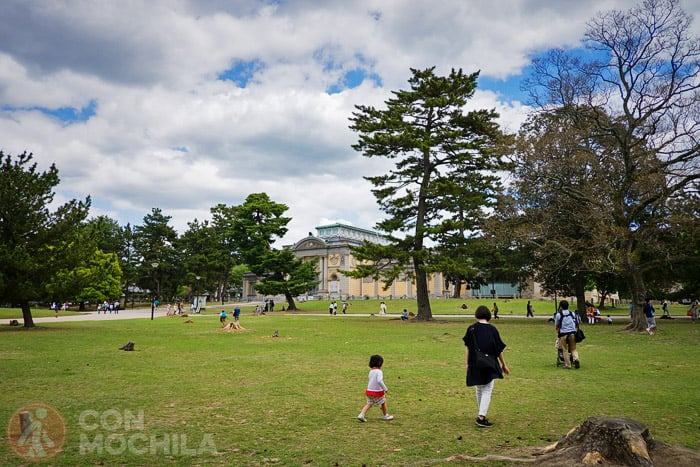
All this while avoiding hundreds of four-legged obstacles, horned animals and lazy messengers of the gods who are dedicated to looking for shika-senbei, cookies that, judging by the physical condition of these sika deer, are quite energetic…
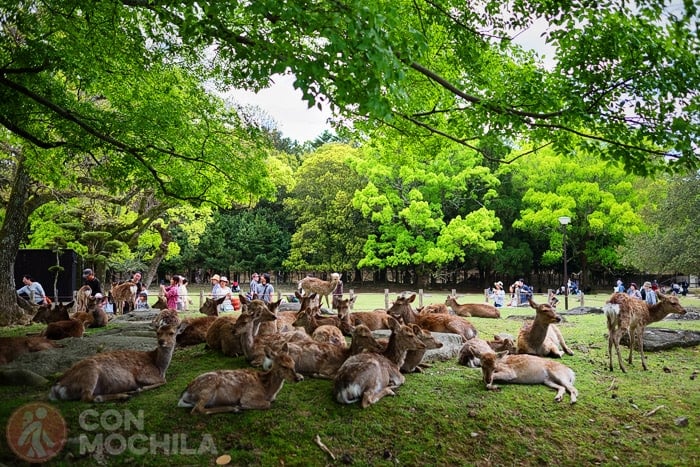
Luckily for these animals, there are some enclosures in the park where they can take refuge from the packs of annoying tourists who chase them with that dangerous knife: the selfie stick…
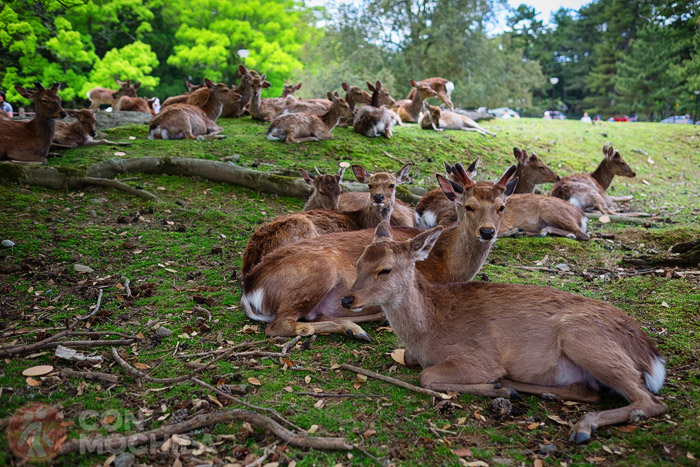
Perhaps the most popular and visited Buddhist temple in this city is the Tōdai-ji, built under the orders of Emperor Shomu and popular for the enormous Buddha it houses inside, the Daibutsu.
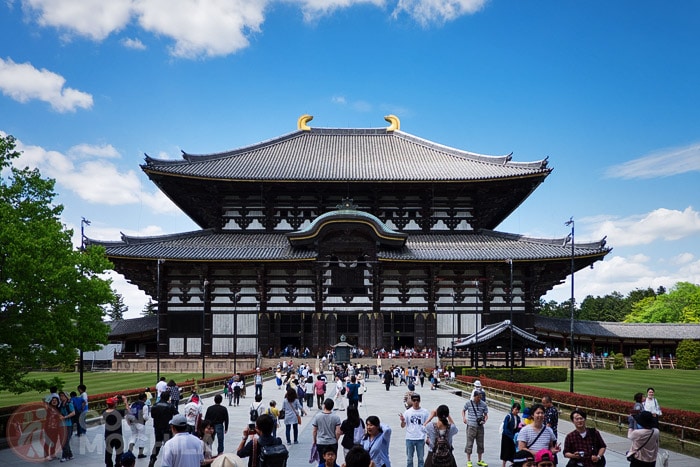
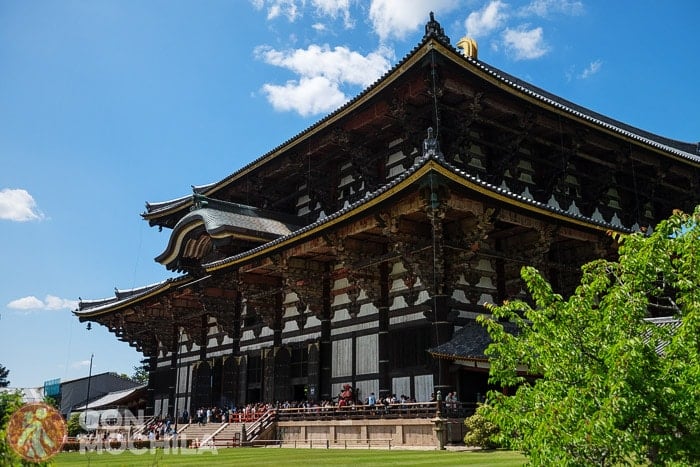
This 16-meter-high figure is one of the largest bronze figures in the world and it is hard to imagine anything larger, with its 437 tons of bronze and 130 kg of gold. It is housed in the Daibutsu-den Hall, said to be the largest wooden building, a UNESCO World Heritage Site.
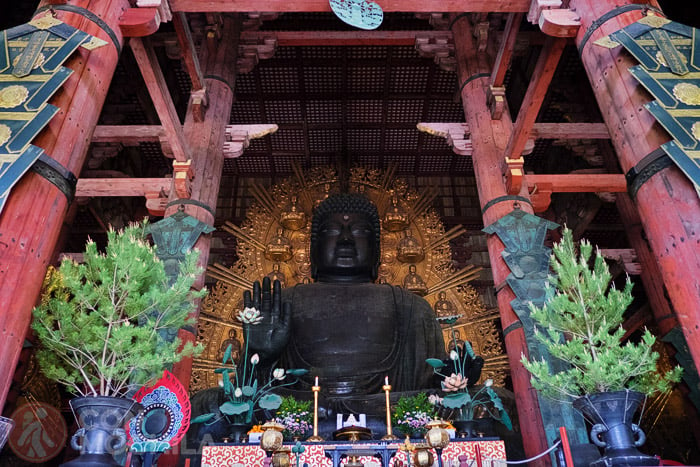
With such fame, size and records, don’t be surprised to find hordes of anxious people gathered at its feet trying to find the angle in which such a figure fits entirely, which is difficult if you are too close, to be honest.
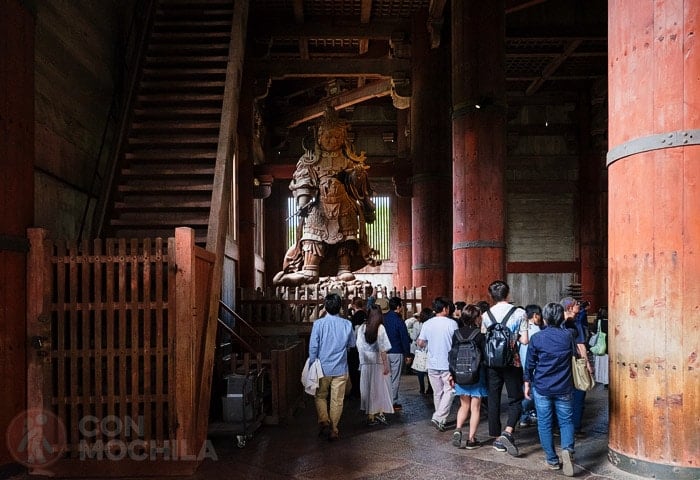
In the halo surrounding the enormous Daibutsu there are 16 small Buddhas that symbolize its different manifestations, to its left is Kokuzu Bosatsu (bodhisattva of memory and wisdom to whom students and the faithful pray) and to the right is Nyoirin Kannon.
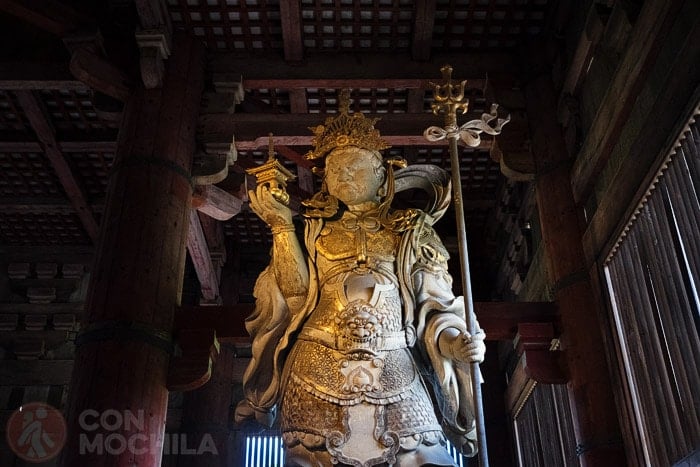
Kasuaga Taisha Shrine is a Shinto shrine founded in 768 by the Fujiwara family. It is filled with stone and bronze lanterns donated by the faithful and lit on rare occasions (during the Mantōrō festival). It is a World Heritage Site and to get to it you have to cross the entire Nara park until you reach the east side.
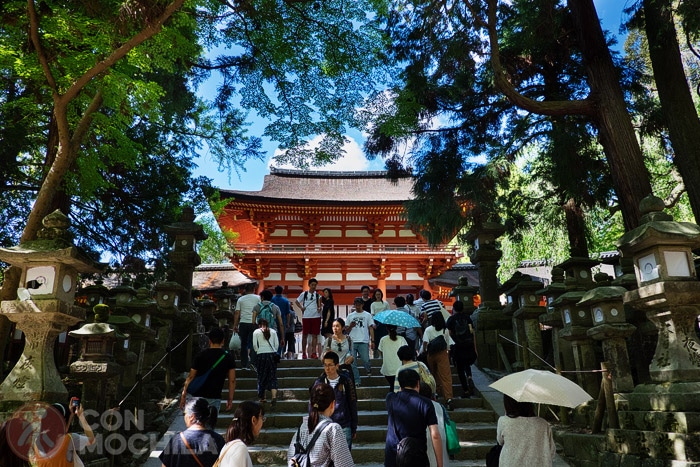
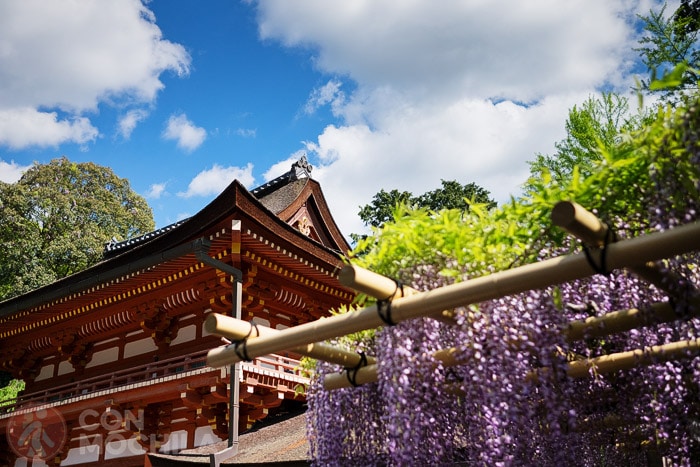
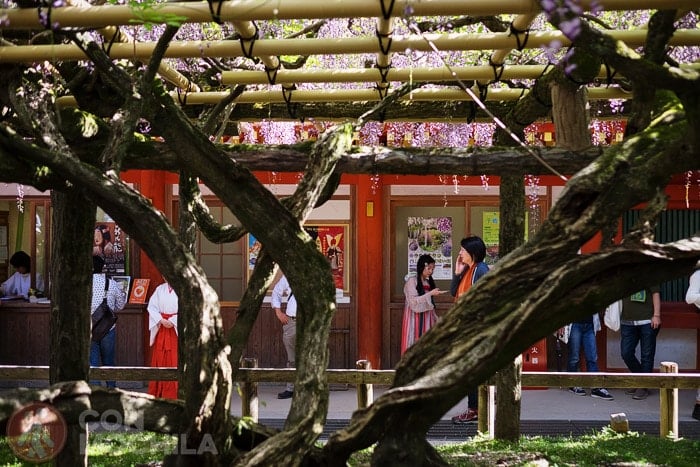
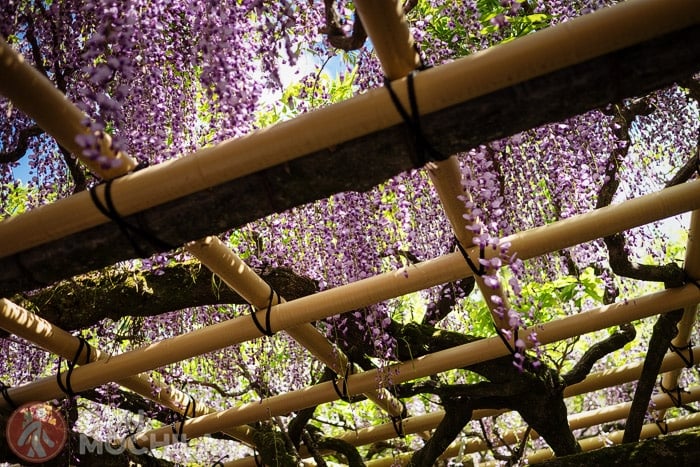
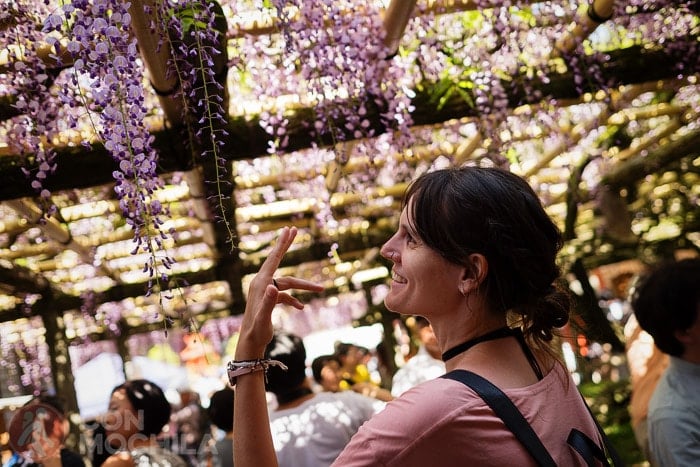
This temple, located at the west entrance of Koen Park, was built in 669 in Kyoto to seek healing for a member of the Fujiwara family; it was later moved to Nara in 710. Today this Buddhist temple is the national center of the Hosso school.
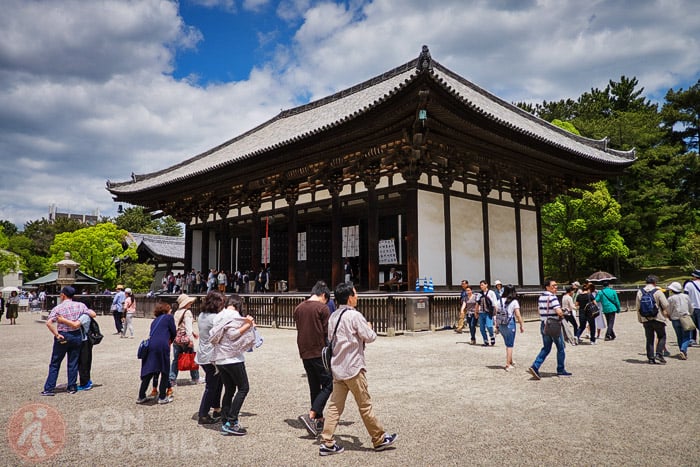
At one time it consisted of around 150 buildings, but today little remains and among the remains are two pagodas, one with three levels and another with five, the latter being the second tallest in Japan.
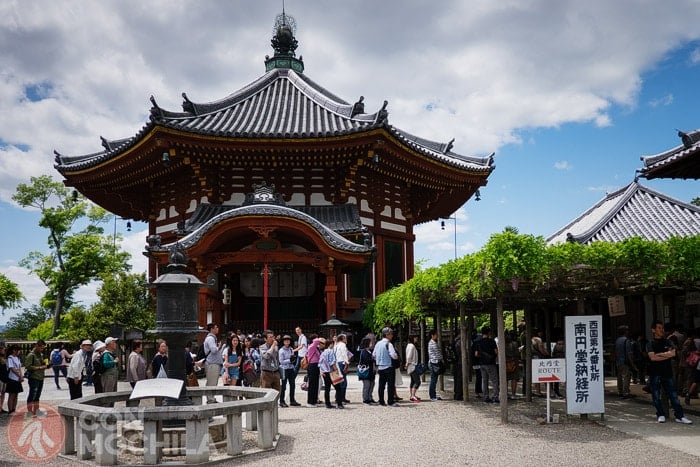
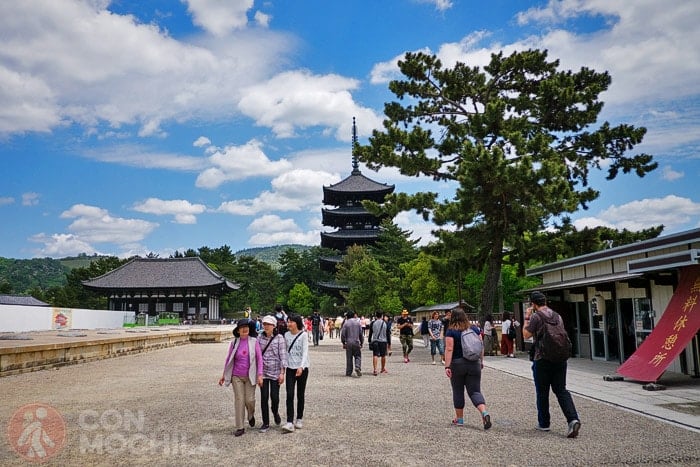
Nara Koen Park covers an area of several kilometres full of vegetation and, as we have already mentioned, there are many more things to see inside.
The Isuien Japanese Garden, the Sarusawa-ike Pond, museums such as the Nara National Museum (with a collection of Buddhist art) or the Kofukuji National Treasure Museum are just an example. Other Historical Monuments of ancient Nara are: Gangō-ji, Yakushi-ji, Tōshōdai-ji and Heijō palace.
Of course, outside the park you can also find more temples, dozens of souvenir shops and restaurants. You just have to walk around and go with the flow of the other tourists who visit the place or grab a map from those they give out at the train station and start looking for things.
The park is also full of food stalls (at least on holidays), especially along the path leading to Tōdai-ji temple, so if you get hungry (or are in a hurry) you can always buy something typical of Nara or ice cream and eat it while you continue walking.
If you are already in the city, you can visit all of the above on your own, but if you want to enjoy it to the fullest, we recommend a walking tour of Nara. It’s up to you.
You will most likely decide to visit Nara from Osaka, the main starting point for visiting this place. If you want to do it on your own you will have to go by train:
You have an excursion to Kyoto and Nara guide lasting 10 hours with pick-up at your hotel in Osaka, Kyoto or Nara.
If you are coming from the capital you should take the following lines:
Remember that you can travel on all JR lines at no cost if you have previously purchased the JR pass.
You don’t need to stay in Nara because you can visit it in just one day if you stay in nearby cities such as: